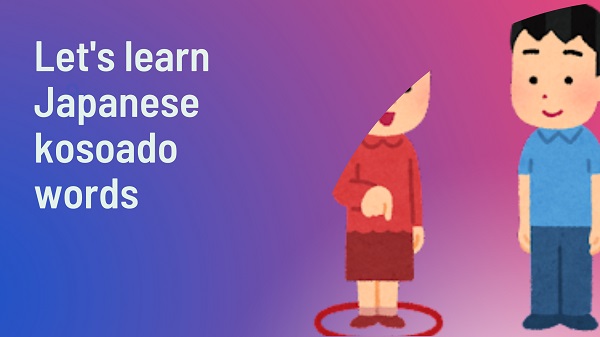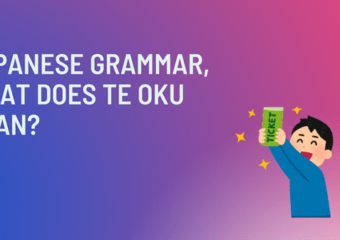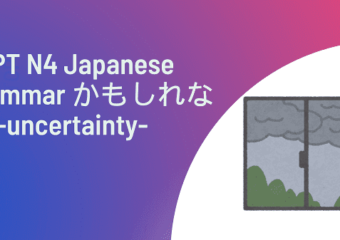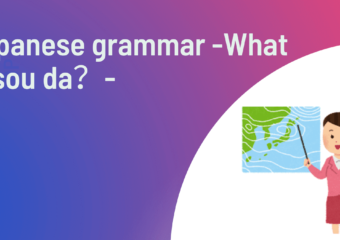How can we say “this”, “that”, “here” or “there” in Japanese?
When we talk about these things, the words we use change depending on physical distance between a speaker and listener.
The words are called こそあどことば because the first syllable is こ(ko), そ(so), あ(a) or ど(do).
Let’s learn Japanese kosoado words in this article.
・Example sentences of kosoado words.
What is “ko”?
We use こ for something near the speaker.
Let’s see examples.
| Object | これ |
| Place | ここ |
| Direction | こちら、こっち |
| Describing noun | この |
Please look at the picture.

She has an apple, which means the object is near the speaker.
Therefore, she says “これはりんごです。”
Let’s see the next picture.
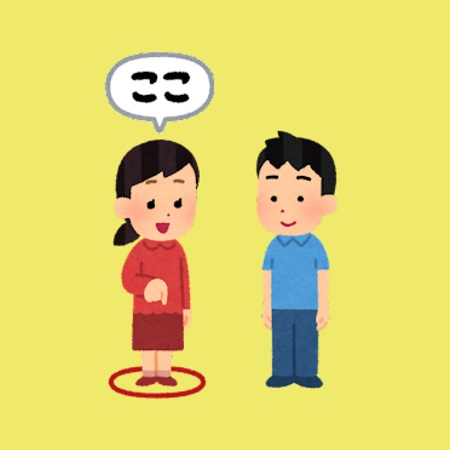
She tells him where she is, which means the place is near of her.
That’s why she says ”ここ”.
Let’s move on to the next picutre.
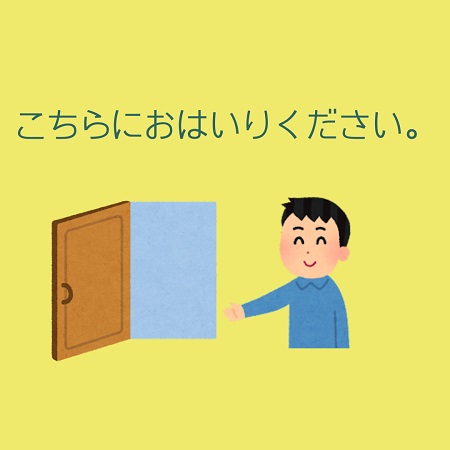
He asks to enter this room.
The door is near of him, so he says “こちらに おはいり ください”.
We also use こちら when you introduce a person who is not a family member.
(ex) こちらは たなかさん です。
This is Mr.(Mrs.) Tanaka.
Let’s see the next picture.
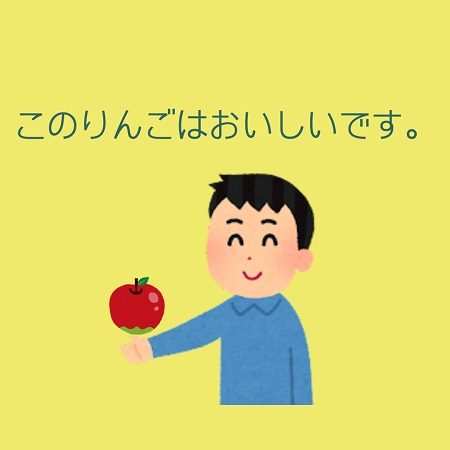
He has an apple and it is near the speaker, so he says “この りんごは おいしいです”。
この describes りんご (noun).
This apple is good.
What is “so”?
We use そ for something near the listener.
Let’s see examples.
| Object | それ |
| Place | そこ |
| Direction | そちら、そっち |
| Describing noun | その |
Let’s see the first picture.
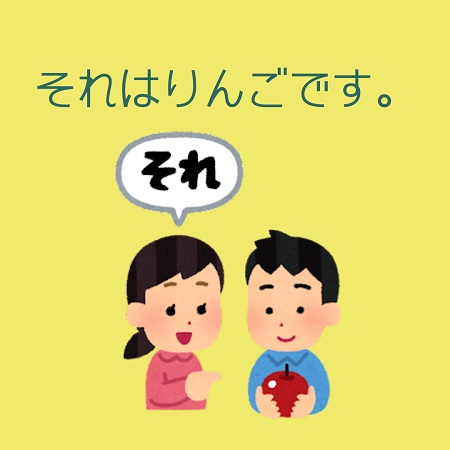
A man has an apple and she wants to say it is an apple to him.
A listener has an apple, so she says “それはりんごです”.
Let’s move on to the next picture.
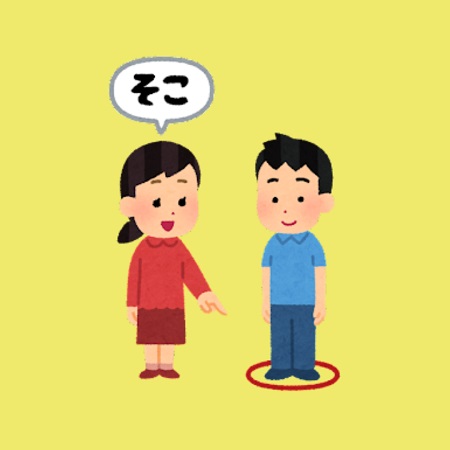
The girl (speaker) mentions his standing point (listener’s point).
That’s why she says ”そこ”.
Please see the next picture.

The man (speaker) asks her to enter the room.
The girl is near of the door, so he says “そちらに おはいり ください”.
Let’s see the next picture.
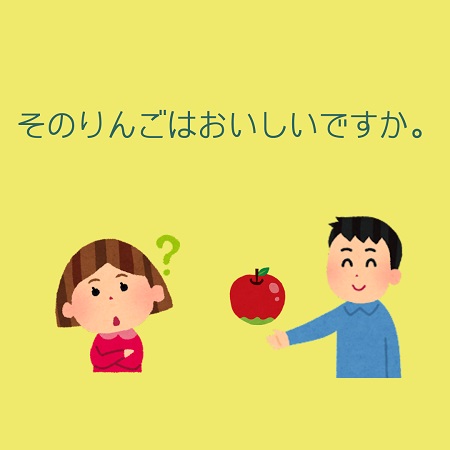
The man (listener) has an apple, so it is close to him.
The girl (speaker) wants to ask if the apple is good.
Therefore, she says “その りんごは おいしい ですか”.
What is “a”?
We use あ for something far away from both a speaker and listener.
Let’s see examples.
| Object | あれ |
| Place | あそこ |
| Direction | あちら、あっち |
| Describing noun | あの |
Please look at the picture.
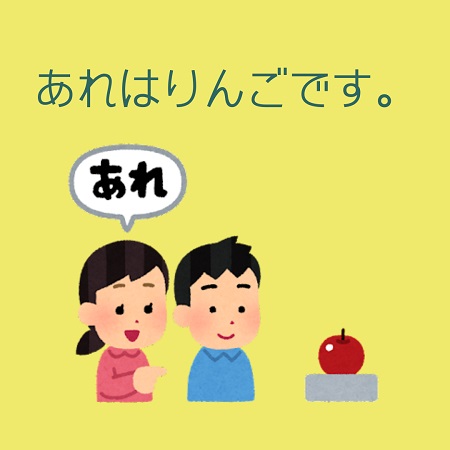
There is an apple far away from both of them, so she says ”あれは りんご です”.
Please see the next picture.

The circle is far from both of them.
Therefore, she says ”あそこ”.
Let’s look at the third picture.
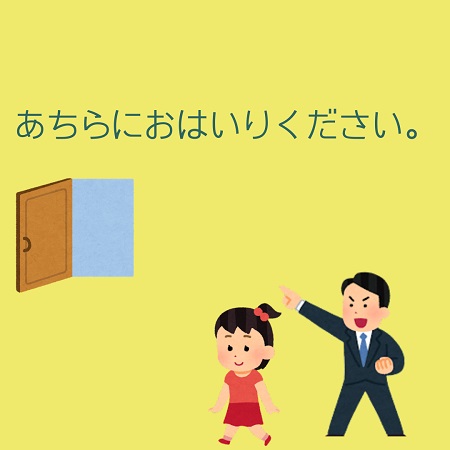
He asks her to enter that room.
The door is far from both of them, right?
That’s why he says ”あちらに おはいり ください”.
Let’s move on to the next picure.

There is an apple far away from both of them and she is asking if it is good.
Therefore, she says ”あの りんごは おいしいですか”.
What is “do”?
We use ど for something we don’t know the distance.
Actually, we use ど when we ask something.
| Object | どれ |
| Place | どこ |
| Direction | どちら、どっち |
| Describing noun | どの |
Let’s see the first picture.

She is asking which is an apple.
She says ”どれが りんご ですか”.
Let’s move on to the next picture.

He lost contact lenses and is looking for them.
Maybe he says “where is my contact lenses?”
In Japanese, he says “コンタクトはどこ”.
Please look at the next picture.
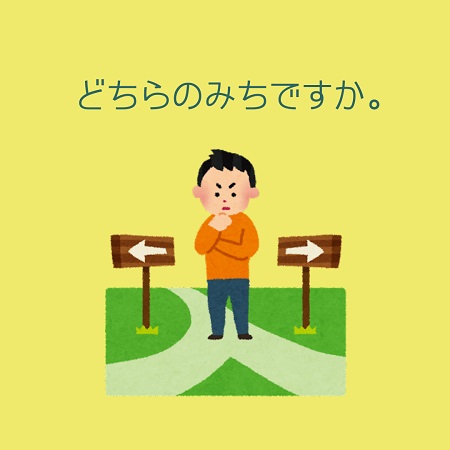
We use どちら (or どっち) when we ask a direction or chose from more than two things.
He would say ”どちらの みちですか?”
It means which way I should go.
Let’s see the last picutre.
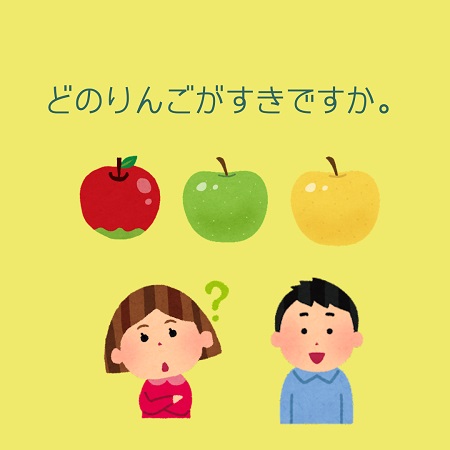
There are three types of apple and she is asking which apple he likes.
In this case, we use “どの”.
どの りんごが すきですか。
Which apple do you like?
conclusion
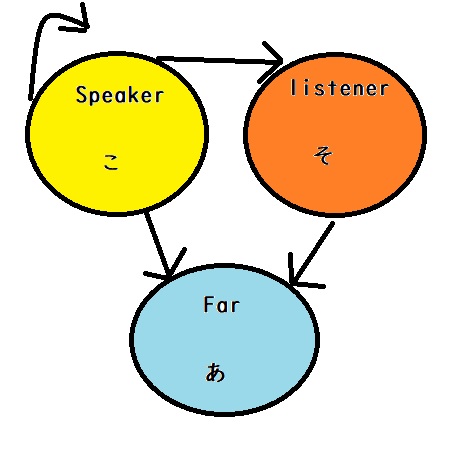
We use “ko” words if it’s near of me.
If it’s near the listener, we use “so” words.
We use “a” words if it’s far from both the speaker and the listener.
When we don’t know the distance, we use “do” words.
| Speaker’s view | listener’s view | Far from both of a speaker and listener | We don’t know the distance. | |
| Object | これ | それ | あれ | どれ |
| Place | ここ | そこ | あそこ | どこ |
| Direction | こちら、こっち | そちら、そっち | あちら、あっち | どちら、どっち |
| Describing noun | この | その | あの | どの |
If you’d like to learn more Japanese, please feel free to contact me.
I teach Japanese in-person or online.
You can also learn Japanese on my Instagram page.
